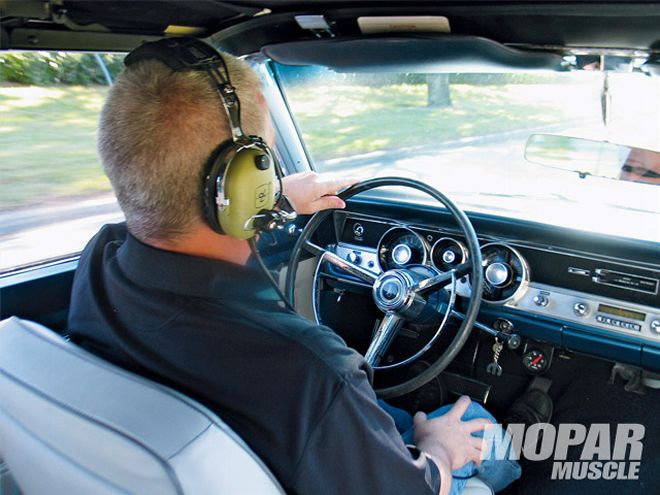
 In loud airplanes, pilots use noise cancelling headsets for a quiet ride. You can get the same quiet ride in your old Mopar with the right insulation and sound dampening material. We'll show you how.
In loud airplanes, pilots use noise cancelling headsets for a quiet ride. You can get the same quiet ride in your old Mopar with the right insulation and sound dampening material. We'll show you how.
While there are a few die-hards left in the Mopar world, most of us by now have a newer Mopar car or truck we use as a daily driver, saving our classic Mopar for the weekend car shows, cruising, or occasional track duty. Though we'd all like to drive our classic cars more often, they just don't seem to be as comfortable or quiet riding as our newer vehicles, and they are simply more tiring to drive, so they often remain parked. There are several reasons our old cars wear us out quicker when we go driving, including stiffer suspensions and fewer creature comforts, but a major cause of driver fatigue has been shown to be cabin noise. That's right--the constant drone of road and wind noise simply wears out the driver and passengers in the vehicle, making them irritable and cranky. And we don't have to tell most of you how unpleasant a car ride can be with an irritated family. Another reason these cars can get uncomfortable is because the heat of the engine, exhaust, and drivetrain is transferred through the floor and firewall, making for a sticky ride. Fortunately, these problems can be alleviated by insulating your Mopar properly and using modern noise, thermal, and vibration dampening materials.
Back in the '60s and '70s when most of our classic Mopars were built, noise and vibration dampening weren't on the top of the list when it came to automobile manufacturing. Thankfully, the Chrysler engineers were busy designing powerful engines and bulletproof drivetrains, making our cars some of the most desirable muscle cars of the era, but very little attention was paid to making these cars quiet to ride in. Mopars were as good as other cars at the time, with rubber door and window seals and a little insulation behind the firewall and under the carpet to keep heat out of the passenger compartment, but by today's standards the insulation and vibration and sound dampening in these old cars is woefully inadequate, making for a noisy, and often sweltering ride.
Actually, there are more ways for noise and heat to get into the cabin of your Mopar than you've likely considered. While door and window seals are some of the items we often replace, remember that sound and sometimes heat can also sneak around the trunk seal, the cowl seal at the rear of the hood, and even through the floor and carpet, especially if the car is missing body plugs or has worn window whiskers. Fortunately, companies like YearOne are reproducing most of the original seals and insulation found in our old Mopars, and the aftermarket parts are made from modern materials often making them better than the ones installed when our cars were new. So the first step in getting our old Mopar riding quietly is to install, restore, or replace all of the factory seals, body plugs, and insulation in our cars, ensuring the car is at least as quiet and insulated as when it left the factory. But to really reduce the noise and vibrations in our old cars, additional, modern dampening material can be used as well.
Technology has come a long way in the thirty or so years since the muscle car era, and modern cars now have very dense insulation throughout to reduce the noise, heat, and vibrations caused by the car's running gear, the road, and the wind. Luckily, companies like Hushmat sell this same OEM approved material in sheets and in kits for older cars, giving us the opportunity to make our old cars ride more like new ones, at least in terms of heat and noise. The Hushmat material is specifically designed to dampen vibrations, reduce noise, and act as a thermal barrier, and is self adhesive requiring very little prep to install. Although the material is dense, and heavy, it can be very effective even when used sparingly so it won't necessarily add a bunch of weight to your car. Since we were assembling our '67 Barracuda after paint, and since this car will be a regularly driven street car, we decided to try and make it as quiet as possible. Being a convertible, and prone to wind and road noise anyway, we figured this would be a good test of both the original replacement materials from YearOne, and the modern Hushmat dampening material.
Once we completed the job and got the car on the road, we can honestly say the results were nothing less than amazing. While we can't say our '67 Barracuda convertible rides as quietly as a modern luxury vehicle, we can say that it's the quietest riding A-body convertible we've been in, and we'd venture to guess that it's as quiet as far more modern cars like the Chrysler Sebring convertible. The best part is that now we have one less excuse not to enjoy driving our Mopars on a regular basis.